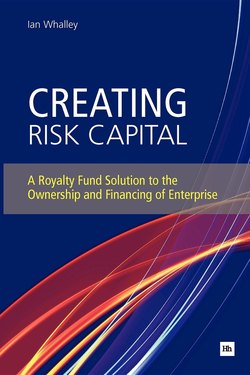Читать книгу Creating Risk Capital - Ian Whalley - Страница 20
На сайте Литреса книга снята с продажи.
Rolls-Royce
ОглавлениеIn 1884, at the age of 21 and with savings of £20, Henry Royce set up an engineering and electrical business in Manchester: F. H. Royce & Co. Some months later he took in a partner, who invested £50. The business remained precarious for many years, the partners living in a room over the workshop, until demand for dynamos, then electrical cranes, brought a period of prosperity. In 1893 the partnership was converted into a limited company, which became Royce Ltd. in 1899, when a successful flotation raised £30,000 for a new factory and additional working capital.
In the early 1900s, with trade depressed, Royce turned his attention to motor cars, producing his first in 1904. A month after its first run, he met the aristocratic car enthusiast and salesman, the Hon. Charles Rolls, and began discussions which led to an agreement in December 1904 under which Rolls contracted to take all the cars manufactured by Royce Ltd. and sell them under the name Rolls-Royce. In 1906 Rolls-Royce Limited was formed and further capital was raised from the public to enable the company to move into new premises in Derby for the production of ‘the most perfect cars’, notably the legendary Silver Ghost.
In 1914 Rolls-Royce turned its attention to aero engines and became a leading manufacturer during the Great War. In 1931 the Rolls-Royce ‘R’ engine powered the Supermarine S6 seaplane which won the Schneider Trophy competition and established a new world air speed record. This led eventually to the Merlin engines which powered the Spitfire, Hurricane, Lancaster, Mosquito, Mustang and other aircraft of World War II, an achievement which Sir Henry Royce did not live to see. Rolls-Royce also took over the development and manufacture of gas turbines, initially for aero engines during the war, and subsequently for ships and power stations as well.
After the successful development of engines like the Dart, Avon and Spey, the company was overstretched by its far-sighted effort to bring the innovative RB211 engine to the US civil airliner market and specifically to the Lockheed TriStar aircraft. This proved to be beyond the company’s financial resources, bringing it into receivership in 1971, and subsequently into government ownership.
The RB211 and its derivatives in the Trent family of engines eventually proved very successful. The motor car division prospered and was floated off, and the company broadened its activity by providing gas turbine power to navies and the oil and gas industry. These developments helped the recovery of the company, enabling it to return to the private sector through a flotation on the Stock Exchange in 1987. Since then, the company has reached a position where it supplies engines to most major airlines and many smaller ones too; aided by strategic partnerships and acquisitions, it has grown into a major operation in the civil and military aerospace, marine and energy markets of the world.
